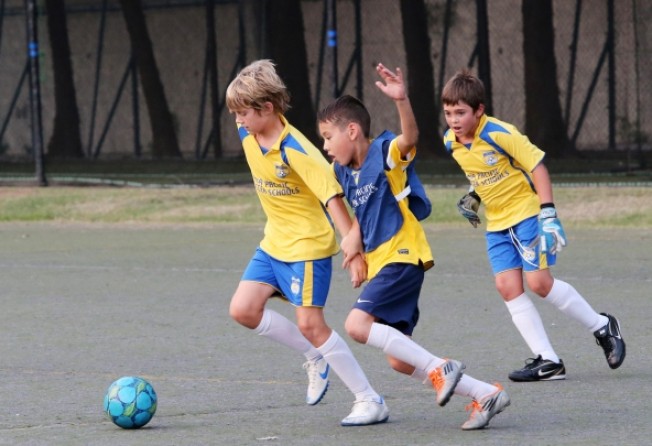Youth sports: keeping kids safe in the heat

It's accepted that regular, age-appropriate exercise for school-age children can improve overall health and fitness, and provide lifetime advantages such as enhanced academic achievement.
Sports can play a key role in achieving these gains in a fun and competitive way.
Playing sports effectively and safely in the heat, however, can be particularly challenging. The dangerous effects of hot weather are known, yet guidelines for managing hydration, reducing thermal strain, optimising performance and minimising the risk of heat illness from exertion are neither sufficiently evidence-based nor sport-specific.
Exertional heat illnesses include muscle cramps, heatstroke or hyponatremia (when sodium in the blood is dangerously low). Symptoms of these range from nausea and vomiting to unconsciousness.
Notably, there has been a long-standing perspective that children and adolescents are less effective than adults in regulating body temperature during exercise and other physical activity in the heat, and are thus less less tolerant of and less capable of performing well in a hot environment.
Current research suggests that children are no more at risk than adults for heat-related problems when hydration is maintained.
Therefore, safety and performance guidelines for youngsters who are training and competing in the heat should focus on readily modifiable risk factors such as the intensity and duration of activity, hydration and playing schedule.
Such an emphasis by health care providers, parents, coaches and sports governing bodies can more effectively improve the health and safety of young athletes during practice, training and competition in the heat.
The following guidelines are summarised from the most recent Policy Statement on Climatic Heat Stress and Exercising Children and Adolescents from the American Academy of Paediatrics:
- Young athletes, parents, coaches, staff and others working with such athletes should be informed about the dangers of training and playing in the heat, and should be given guidelines on effective prevention or risk-reduction strategies.
- Protocols should be in place and practised, and trained personnel with access to adequate facilities should be on site to treat all forms of exertional heat illness from any athletic activity that involves moderate to vigorous physical activity in the heat.
- Youngsters should be well-prepared prior to participating in any strenuous athletic activity in the heat. This includes being hydrated and well-nourished, as well as sufficiently fit and rested.
- They should be encouraged to be honest and report any symptoms or signs of developing exertional heat illness in themselves or their teammates
- Gradual and appropriate exposure to a hot and/or humid environment; the uniform and protective equipment; and the intensity and duration of training and competition are essential to minimise the risk of exertional heat illness during the preseason or when travelling to a more stressful environment.
- Water and other appropriate fluids should be readily accessible, and young athletes should be given regular opportunities to consume these fluids throughout practice or the game to offset sweat losses and maintain adequate hydration
- Outdoor activities should be modified for safety in relation to the conditions, and individual athletes' health and fitness. These include lowering the intensity or duration of activities, more frequent or longer breaks to rehydrate and cool down, weather-appropriate uniforms and protective gear and cancelling or rescheduling an activity to a cooler time of day.
- Youngsters should be closely monitored in the heat. Participation should be stopped immediately and appropriate medical attention should be given at the earliest signs of exertional heat illness
- A written emergency action plan for managing severe heat illness and other medical emergencies should be in place and practised ahead of time.
- Coaches and event administrators should provide sufficient rest and recovery time in competitions and between multiple single-day training sessions.
With sufficient precautions and monitoring, exertional heat illness is usually preventable. Most healthy children and adolescents can safely participate in outdoor sports - even when it is hot.
Dr Michael Bergeron is the executive director of the US National Youth Sports Health & Safety Institute. Reprinted with the permission of the American College of Sports Medicine